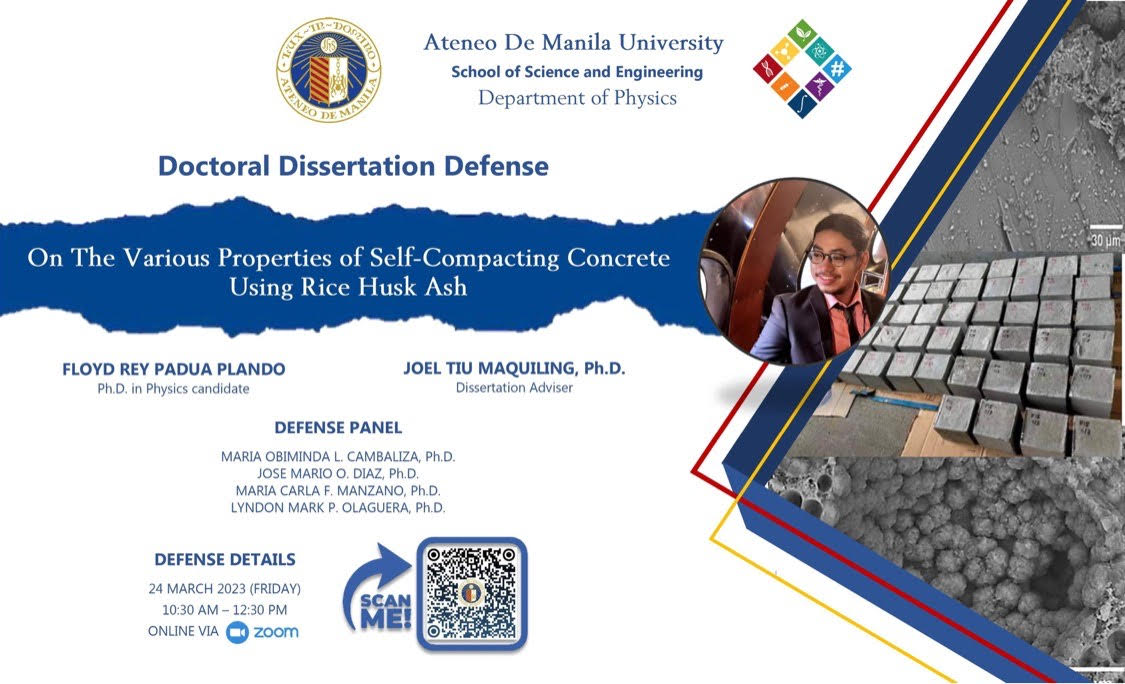On The Various Properties of Self-Compacting Concrete Using Rice Husk Ash
The Department of Physics
School of Science and Engineering
invites the public to the dissertation defense titled
“On The Various Properties of Self-Compacting Concrete Using Rice Husk Ash”
by
MR. FLOYD REY P. PLANDO
PhD Physics Student
on
March 24, 2023 (Friday)
10:30 AM to 12:30 PM
Online via Zoom
Join the session by scanning the QR code on the poster.
Adviser
Joel Tiu Maquiling, PhD
Panel Members
Maria Carla Manzano, PhD (External Panelist, DLSU)
Maria Obiminda Cambaliza, PhD
Jose Mario Diaz, PhD
Lyndon Mark Olaguera, PhD
Abstract
Self-compacting concrete (SCC) is a special mix design that offers advantages, such as high flowability and better compaction. Combining it with natural pozzolans through partial cement replacement influences considerably the filling and passing abilities, and segregation resistance, while generating prolonged mechanical, pozzolanic, and durability properties. In particular, the incorporation of rice husk ash (RHA) as supplementary cementitious material (SCM) in an alkali environment promotes enhanced microstructure owing to its very reactive fine silica. However, there is limited evidence reported on the effects of RHA on SCC’s overall flowability, pozzolanic, durability, microstructure, and radiation shielding effects. This study reports that there was a favorable effect on the compressive strength, durability, and pozzolanic performances of SCC by partially replacing ordinary Portland cement (OPC) with RHA. These results were reflected from the chemical bonds, mineral phase, and morphological analysis using FTIR, XRD, and SEM, respectively. The prominent interaction mechanisms for RHA-SCC in terms of radiation shielding were photoelectric absorption, incoherent scattering, and pair production in the nuclear field. Using EpiXS software to obtain shielding quantities concluded a better shielding effect compared to its precursors RHA and OPC. This can cost-effectively be used as an additive in preparing radiation shielding concrete.

